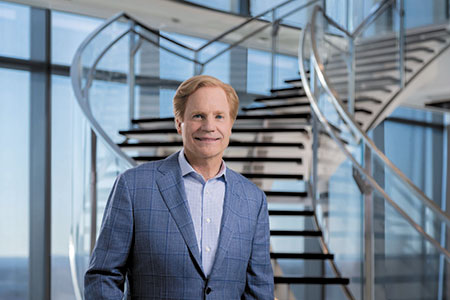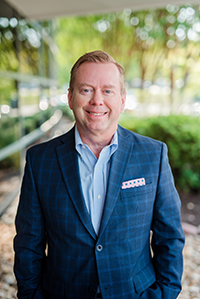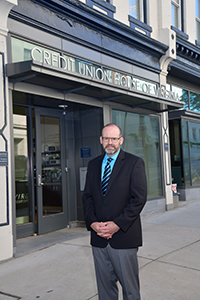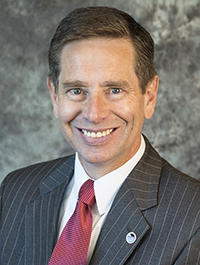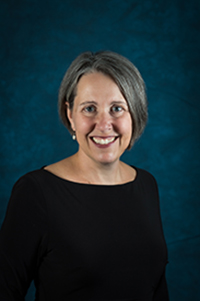Virginia is seeing a wave of bank mergers and acquisitions, a trend that could intensify, banking experts say.
“We could potentially see a record-setting year for bank mergers and acquisitions,” says John Asbury, president and CEO of Richmond-based Atlantic Union Bankshares Corp. and chairman of the Virginia Bankers Association.
Banks are reaching for scale, meaning greater size and efficiency, explains Asbury.
At least six mergers involving 10 Virginia-based banks have been announced in the past year.
Three distinct market forces — tied in large part to the effects of the coronavirus pandemic — have converged to fuel the merger and acquisition environment, banking experts say:
Prolonged low interest rates continue to shrink bank profit margins.
Subdued loan growth hampers bank revenue.
Demand to invest in more digital and technology options has risen.
Until the economy shows sustained improvement and excess liquidity is absorbed, nearly 0% short-term interest rates likely will continue and lending will remain soft, Asbury says.
What’s more, safety precautions enacted during the pandemic shifted the banking experience to more online transactions, underscoring the need for even more technology and cybersecurity measures.
While these are the main drivers behind rising M&A activity, bankers also face prospects of a tighter regulatory environment and higher tax rates imposed by the federal government.
All point to the notion that bigger is supposedly better. Current wisdom dictates that the more resources a bank possesses, the more efficient and profitable it will be.
Take for example the pending acquisition of Community Bankers Trust Corp., the Henrico County-based parent of Essex Bank, by Charleston, W.Va.-based United Bankshares Inc. It makes sense from a size and scale perspective, says Rex L. Smith III, president and CEO of Community Bankers Trust.
“A lot of time, effort and costs” go into staying competitive, complying with regulations and keeping up with the latest in technology, Smith says.
With $1.7 billion in assets at Essex Bank as of March 31, Community Bankers Trust agreed in June to be acquired by United Bankshares, parent company of United Bank, with $27 billion in assets.
The $303.3 million deal, marking United’s 33rd acquisition since the late 1980s, is expected to close in the fourth quarter, pending regulatory and shareholder approvals. Smith will be retained as Virginia regional president.
The transaction will open new markets for United Bank in the Richmond, Northern Neck and Lynchburg areas and in Baltimore and Annapolis. And it also will give Essex Bank (which would be merged into United Bank) deeper pockets with which to compete more effectively.
Scaling up

“The recurring theme in bank mergers is scale,” says Bruce Whitehurst, president and CEO of the Virginia Bankers Association. “Economies of scale lead to more efficient organizations, which should be more profitable and provide more growth opportunities.”
The more assets an acquired bank brings with it, the more opportunity the merged bank has to benefit from economies of scale as well as having more flexibility with product offerings.
“It’s very difficult to find a $1 billion bank. They’ve either been gobbled up or they don’t exist,” especially in a well-performing market like Richmond, Smith says, noting Essex Bank’s appeal to United Bankshares.
Other mergers announced or completed this year include:

Virginia National Bank in Charlottesville with The Fauquier Bank in Warrenton (completion announced April 1).
First National Bank, parent company of First Bank, in Strasburg with The Bank of Fincastle in Botetourt County (expected to close in the third quarter).
Charlottesville-based Blue Ridge Bankshares Inc., parent of Blue Ridge Bank, with Richmond-based Bay Banks of Virginia Inc., parent of Virginia Commonwealth Bank (completion announced Feb. 1).
Blue Ridge Bankshares with Fairfax-based FVCBankcorp Inc., parent of FVCbank, creating the state’s fourth largest community bank (deal expected to close by early 2022).
Pinnacle Bankshares Corp., parent of First National Bank, in Altavista and Virginia Bank Bankshares, parent of Virginia Bank and Trust, in Danville, completed their merger Nov. 2, 2020.
“There are ample reasons to buy a bank and ample reasons to sell,” says Steven C. Yeakel, president of the Virginia Association of Community Banks. “I don’t see anything in the near term that will slow that down.”
Although large regional banks buy smaller banks or, on occasion, equal-size institutions merge (such as the combination last year of banking giants SunTrust Banks Inc. and BB&T Corp. into Charlotte, North Carolina-based Truist Financial Corp.), community banks “are where you see the most activity” for mergers and acquisitions, Yeakel says. “There are more buyers out there than sellers.”
About 100 community banks (defined by Congress as banks with less than $10 billion in assets) were in operation in Virginia when Yeakel became association president in 2013. Due to consolidations, the state now is home to about 60 community banks.
Meanwhile, the number of de novo — or startup banks — has shriveled, intensifying competition for the remaining banks. Due to onerous regulations and high capital requirements, there have been fewer than
60 new banks chartered nationwide since 2010. More than twice that many banks opened each year in the decade before the Great Recession. Here in Virginia, only a few startup banks — including 2-year-old Trustar Bank in Great Falls and Integrity Bank for Business, which launched in Virginia Beach in May — have opened during the last 10 years.
Despite their shrinking numbers, “the community bank brand is good and getting better,” Yeakel says.
Community banking is a streamlined business model based on local deposits and loans and local decision-making, Yeakel explains.

Community banks were robust participants in the Paycheck Protection Program under the federal CARES (Coronavirus
Aid, Relief and Economic Security) Act, a $2.2 trillion economic stimulus signed into law by President Donald Trump in March 2020. (The PPP loan program incentivized small businesses to keep employees on payrolls.)
And community banks in Virginia maintained a deposit market share of 8.4% at the end of March 2021, up slightly from where it was before the pandemic, indicating resilience.
Like a lot of sectors, banks also are faced with having to make big technology upgrades to provide their customers with better products and services, as well as upping their investments in cybersecurity, Yeakel says, and this can be costly for smaller banks.
“Consolidation is across the board, going on in most industries, not just banking. Technology is a large driver,” he says. “I do think the trend will continue. To what extent is a bit of a mystery.”
New regs on horizon?
Kent Engelke, chief economic strategist and managing director at Capitol Securities Management Inc., a brokerage and investment firm in Henrico County, says the most pressing issue for banks is not economic, though.
“The biggest risk is government regulation,” Engelke says. “Banks will be and have been penalized for taking risks.”
Government mandates decades ago required banks to loan money to risky borrowers to increase homeownership. But risky lending practices and subprime mortgages led to a slew of foreclosures during the Great Recession, resulting in the 2010 passage of the Dodd-Frank Wall Street Reform and Consumer Protection Act to improve accountability and transparency in the financial system. And those increased regulatory burdens significantly added to the cost of compliance for banks and other lending institutions. Smaller banks that had difficulty meeting the new costs merged or were absorbed by larger banks to achieve the greater scale needed to compete in the new environment.
Engelke, who has served on two bank boards, sees a similar scenario playing out with a new push requiring banks to produce reports on their impact on climate and the environment, “costs that could be astronomical for smaller banks.”
The largest banks have pledged $4 trillion in ESG (environmental, social and governance) investing over the next 10 years.
In May, President Joe Biden signed an executive order related to “Climate-Related Financial Risk,” taking steps to prepare the federal government to address climate change and other ESG issues through financial regulation.
“Today, the feds are mandating ESG lending,” Engelke says. “Will this blow up like securitization?”

That’s not only probable, but also likely, Engelke says. Massive sums of money will be spent to ensure compliance and that doesn’t include the human cost, he says. “It is exhausting to live in fear where regulatory entities are not viewed as a resource, but rather as an enforcer.”
Greater regulation likely will lead to even more mergers and acquisitions, Engelke says.
Smith with Essex Bank acknowledges that complying with ESG regulations could bring additional costs, but he doesn’t think those will be as overbearing as a corporate tax rate increase also proposed by the Biden administration. “That is the one we worry about.”
Whitehurst with the Virginia Bankers Association says ESG lending may affect large banks more than community banks. However, he points out that unlike Dodd-Frank, which doubled regulatory burdens on banks of all sizes, adding layers of complexity and cost, it’s not yet clear how ESG will pan out.
That said, banks came through the pandemic better than expected. Predictions of massive consumer and business loan defaults did not come to pass. “Banks have come through in a much healthier position with their loan portfolios than anyone could have imagined a year ago,” Whitehurst says.
But growth in consumer and business deposits — driven by federal stimulus funds, PPP loans, expanded employment benefits and less consumer spending during the pandemic — has left the industry with high liquidity levels but lower demand for loans, experts say.
Another challenge is running a bank in a persistently low-interest rate environment when the basic business plan for banks is to lend 75 cents to 95 cents on every dollar in deposits, Whitehurst says.
And with loan to deposit ratios down and interest rates low, opinionated banking investors may push for more consolidation.
In such a challenging environment, Whitehurst says, “If a bank feels like combining with [another] bank is going to provide a greater opportunity to grow earnings [and] … to provide an adequate return to your shareholders, that could promote more merger activity.”




